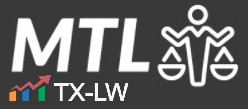You should always pay your taxes on time, right? After all, early payment avoids tax penalties and interest, and shows good faith compliance with tax obligations.
This is not always the best approach. Why? Taxpayers who pay early or even on time may be precluded from getting money back from the IRS if they overpaid their tax liability. In some cases, taxpayers who delay making payments to the IRS may have more refund rights than those who pay on time.
This issue typically arises in two scenarios where taxpayers make advance payments to the IRS. First, when taxpayers make payments but fail to file timely returns. Second, when taxpayers make payments and the IRS conducts an audit or makes an adjustment that results in a statutory notice of deficiency. In both cases, the taxpayer may later discover they not only don’t owe additional tax—they actually overpaid and are due a refund. This problem lies with payments made before either the late-filed tax return or the IRS’s notice of deficiency–which taxpayers may not be able to get back from the IRS. The recent Applegarth v. Commissioner, T.C. Memo. 2024-107, provides an opportunity to consider these timing issues.
Note: there are other rules that come into play for refunds in collection due process hearings, which are similar but different than when you have an IRS adjustment or notice of deficiency as we are addressing in this article.
Contents
Facts & Procedural History
The taxpayer in this case made estimated tax payments to the IRS for 2014 and 2015. The payments were all made on or before the extended due dates for the tax returns for 2014 and 2015.
The taxpayer then filed his 2014 return in June 2019 and never filed his 2015 return.
In November 2019, the IRS issued notices of deficiency to the taxpayer for both years. The taxpayer filed a petition with the U.S. Tax Court to challenge the IRS’s determinations.
The taxpayer provided an amended return to the IRS attorney during the tax litigation. The parties ultimately agreed that there were significant overpayments–$78,472 for 2014 and $9,603 for 2015. So not only did the taxpayer not owe the amounts asserted by the IRS in its notice, the taxpayer was actually owed money back from the IRS.
The question before the court was whether the U.S. Tax Court could order refunds of the overpayments given the statutory time limitations.
The Refund Claim Framework
This is probably not a surprise, but there are a number of deadlines set out in the tax code. For this case, there are two key provisions to consider, i.e., Section 6511(b)(2) and 6512(b)(3).
Section 6511(b)(2) establishes the “lookback” periods for refund claims. For taxpayers who file a tax return, they can recover payments made within three years plus any extension period before the refund claim. For taxpayers who don’t file a return, they can only recover payments made within two years of their refund claim.
Section 6512(b)(3) applies specifically to cases brought in the U.S. Tax Court. It limits the Tax Court’s ability to order refunds to: (1) payments made after the IRS issues its notice of deficiency, (2) payments that would be refundable if a refund claim had been filed on the notice date, or (3) payments covered by an actual refund claim filed before the notice date.
This creates a connection between the notice date and refund rights. Taken together, these code sections limit refund rights based on when payments were made relative to when refund claims are filed or deemed filed. This is why a taxpayer who files a petition with the U.S. Tax Court in response to a notice of deficiency has to focus on the date of the IRS’s notice of deficiency. The code treats this date as a hypothetical refund claim date and only allows recovery of payments made within specific “lookback” periods measured from this date. For taxpayers who haven’t filed returns, this lookback period is generally just two years before the date of the IRS notice. That is the issue in the Applegarth case.
In Applegarth, the taxpayer’s payments were all made more than two years before the November 2019 notice of deficiency. Because he hadn’t filed returns within the proper timeframe, the two-year lookback period applied. As a result, the U.S. Tax Court could not order refunds of the overpayments, even though everyone agreed that the taxpayer was otherwise entitled to the refunds.
Understanding the Lookback Periods
IIt is helpful to consider an example here. Imagine a taxpayer who paid $10,000 in taxes on April 15, 2020, but later discovers they only owed $5,000. Their ability to get back the $5,000 overpayment depends on when they take action.
If they file a tax return (which serves as a refund claim), they can recover payments made within 3 years plus any extension period before filing the refund claim. So if they file the tax return on April 15, 2023, they can get back the April 2020 payment. The 3-year lookback period protects their refund rights.
The situation is quite different if they never file a return and the IRS sends a notice of deficiency. In this case, they can only recover payments made within 2 years before the notice date. So if the IRS sends a notice on April 15, 2023, they can only get back payments made after April 15, 2021. Their April 2020 payment falls outside this 2-year window and is lost.
This is why the Applegarth case turned out the way it did. Since the taxpayer hadn’t filed returns within the proper timeframe, he was stuck with the shorter 2-year lookback period. His payments were made too early to fall within this window.
Planning Around the Timing Rules
These refund rules create some counterintuitive results. A taxpayer who files their return late but within three years of payment has more refund rights than a taxpayer who doesn’t file at all and waits for an IRS notice. And a taxpayer who pays at the last minute (but within two years of an IRS notice) may have more refund rights than one who paid years earlier.
This doesn’t mean taxpayers should delay payments to the IRS. Late payment penalties and interest usually outweigh any theoretical benefit from preserving refund rights. However, it does mean that taxpayers who have made payments should prioritize filing their returns, even if late. A late-filed return is far better than no return when it comes to preserving refund rights.
Given these concepts, there are a few issues that you may be thinking about. One is situations in which a taxpayer is required to file a return with an estimate, and has to true up the return later? There are situations like this built into our tax laws. We covered that topic here as to fixing estimates.
The other question is whether the taxpayer can argue that they did file a timely tax return, even though they technically did not. If the taxpayer has no other arguments, one argument might be that they did file a tax return as a refund claim, it was just an informal refund claim. There is some chance that something the taxpayer provided to the IRS could count as a refund claim–even if it was just a letter or other correspondence the taxpayer sent to the IRS.
Takeaway
The lesson from this case isn’t that taxpayers should delay paying their taxes. Rather, it highlights the critical importance of filing tax returns, even if they’re late. While timely tax payments are important, they must be paired with a filed return to preserve refund rights. Taxpayers who have made significant payments should file returns or protective claims if they discover potential overpayments. Otherwise, as Applegarth shows, the taxpayers could permanently lose their right to substantial refunds due to timing rules alone.
In 40 minutes, we'll teach you how to survive an IRS audit.
We'll explain how the IRS conducts audits and how to manage and close the audit.


